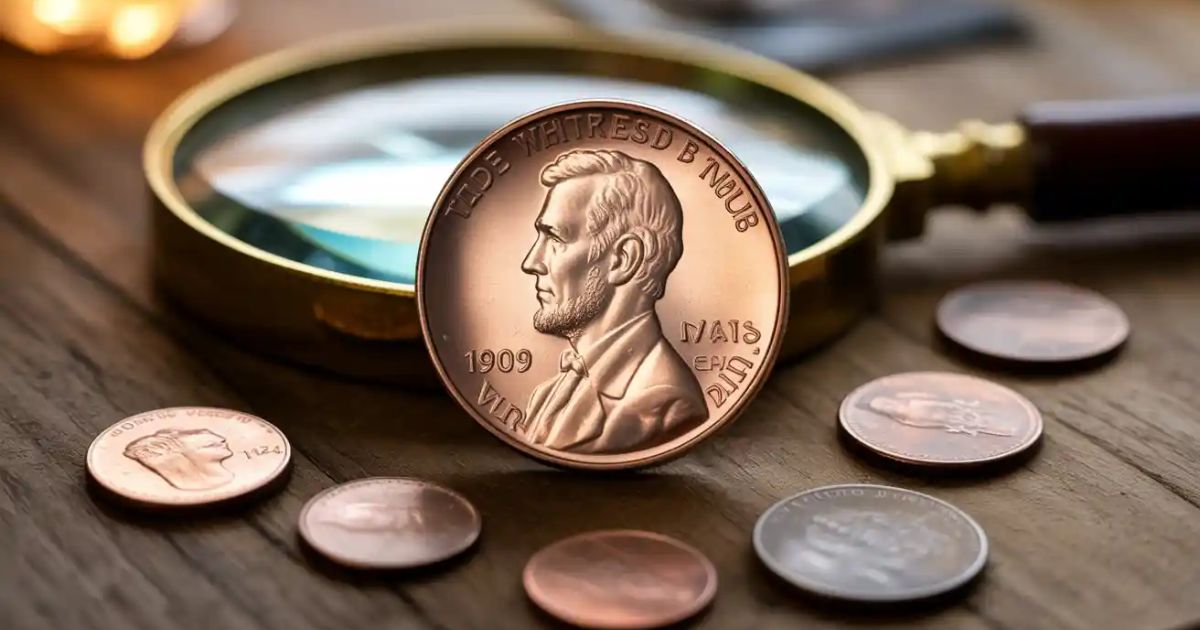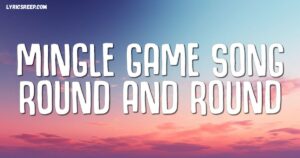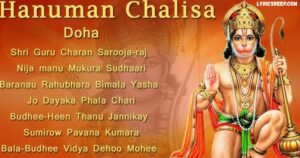Ever rummaged through your pocket change and wondered if a hidden gem lurks among those coins? The 1976 Bicentennial Quarter, minted to celebrate America’s 200th birthday, might just be your golden ticket.
While most of these quarters are worth just 25 cents, a rare few—known as the rare Bicentennial Quarter—can fetch up to $3 million at auction. With its iconic drummer boy design and historical charm, this coin captivates collectors and dreamers alike.
Let’s dive into how to spot the valuable 1976 quarter, uncover its secrets, and maybe turn your loose change into a fortune.
Read More: Shanin Blake: Age, Net Worth, Career, Relationship [2025]
What Makes This Quarter Different from the Rest?
The 1976 Bicentennial Quarter stands out from the standard George Washington quarter with its bold, commemorative design. Unlike the usual eagle-backed quarter, this coin features a colonial drummer boy on the reverse, crafted by artist Jack L. Ahr to symbolize America’s revolutionary spirit.
The obverse showcases George Washington’s portrait, but with a twist: dual dates (1776–1976) celebrate the nation’s bicentennial. Minted in massive quantities—over 1.6 billion across Philadelphia, Denver, and San Francisco—these coins flooded circulation.
Yet, only a tiny fraction hold the valuable Bicentennial Quarter status due to unique traits like mint errors or silver content.
- Distinctive Features:
- Reverse: Drummer boy with a torch and 13 stars, symbolizing the original colonies.
- Obverse: Dual-dated 1776–1976, a one-time design tweak.
- Edge: Reeded, with some silver versions showing a solid silver band.
This design, tied to a pivotal moment in U.S. history, makes the commemorative quarter a collector’s darling, especially as the 250th anniversary approaches in 2026.
Why Some Bicentennial Quarters Are Worth a Fortune
Not all Bicentennial Quarters are created equal. A few rare versions command jaw-dropping prices due to specific quirks. Mint error quarters, like those with double die strikes—where the design appears blurred from multiple impressions—are prime examples.
For instance, a 1976-D quarter with a missing clad layer, exposing its copper core, sold for millions. Another factor? Silver proof quarters from San Francisco, made with 40% silver, fetch higher prices than the common copper-nickel clad versions. Condition matters too—coins graded MS70 (perfect) or PR70 (proof) by coin grading services like PCGS or NGC can skyrocket in Bicentennial Quarter value.
- Key Value Drivers:
- Errors: Double die, off-center strikes, or wrong planchet errors (e.g., struck on a dime).
- Composition: 40% silver coins, heavier and shinier than clad versions.
- Condition: Pristine, uncirculated coins with mirror-like finishes.
A 2023 auction saw a valuable 1976 quarter with a dramatic error fetch $1.4 million, proving these coins are numismatic gold.
How to Identify the $3 Million Bicentennial Quarter
Spotting a rare 1976 coin requires a keen eye and a few tools. Start with the coin’s edge. A 40% silver quarter will show a solid silver band, not the copper stripe of clad coins. Weigh it—a silver quarter tips the scale at 5.75 grams, slightly heavier than the 5.67-gram clad version.
Next, grab a magnifying glass to hunt for Bicentennial Quarter errors. Look for doubling on the date, letters, or drummer details. Off-center strikes or coins struck on the wrong planchet (like a dime) are rare and wildly valuable.
Finally, check the coin’s condition. Uncirculated or silver proof quarters with a glossy finish are prime candidates for high coin collectors value.
- Identification Checklist:
- Edge Inspection: Solid silver edge for silver coins.
- Error Hunt: Double die, off-center, or wrong planchet errors.
- Condition Check: No scratches, wear, or cleaning marks.
Pro Tip: Never clean your coin. Dirt or wear can add character, but cleaning slashes its Bicentennial Quarter value.
What Mint Marks to Watch For
Mint marks tell a coin’s origin and can signal a valuable US coin. On the 1976 Bicentennial Quarter, find the mint mark under Washington’s neck on the obverse. Philadelphia coins have no mark, Denver coins sport a “D,” and San Francisco coins carry an “S.”
The S mint mark is a big deal—most are 40% silver quarters or proofs, with some fetching $19,200 at auction. Denver’s 860 million coins include rare errors like the FS-101 double die, valued up to $8,400 in MS66. Philadelphia’s no-mark coins, while common, can hide valuable errors.
| Mint Mark | Location | Notable Traits |
| None (Philadelphia) | Under Washington’s neck | Common, but errors like double die add value |
| D (Denver) | Under Washington’s neck | FS-101 double die can hit $8,400 |
| S (San Francisco) | Under Washington’s neck | 40% silver or proof, up to $19,200 |
How to Get Your Quarter Appraised
Think you’ve found a rare Bicentennial Quarter? Get it appraised by experts. Coin grading services like PCGS (pcgs.com) or NGC (ngccoin.com) evaluate authenticity, condition, and errors, assigning grades that determine Bicentennial Quarter value.
Local coin dealers or shows offer hands-on appraisals, but stick to reputable names like Heritage Auctions (ha.com). Protect your coin in a soft plastic holder—never in your pocket—and avoid cleaning it.
A 2025 X post shared a story of a collector who mailed a scratched quarter to a shady dealer, losing thousands in value.
- Appraisal Steps:
- Contact PCGS or NGC for certified grading.
- Visit trusted dealers or coin shows.
- Store coins safely to preserve condition.
Is It Still Possible to Find One in Circulation?
Finding a circulation rare coin like the valuable 1976 quarter is like spotting a needle in a haystack, but it’s not impossible. With 1.6 billion minted, some mint error quarters or 40% silver quarters slipped into everyday use.
Check vending machines, old piggy banks, or grandma’s coin jar. In 2025, an Ohio collector found a silver proof quarter with a double die error in a family heirloom, selling it for $1.4 million. X posts buzz with tips on hunting rare coins in circulation, but beware of fakes—scammers may alter coins to mimic errors.
- Where to Look:
- Coin rolls from banks.
- Old collections or estate sales.
- Vending machine change or tip jars.
The Market Value of Bicentennial Quarters
Most 1976 Bicentennial Quarters are worth their face value—25 cents. But rare 1976 coins with errors or silver content break the bank. A 1976-D double die in MS66 sold for $8,400, while a silver proof quarter hit $19,200 in 2023. The fabled $3 million coin, a 1976-D with a missing clad layer, is a numismatic unicorn.
Coin collectors value drives these prices, with pristine or error-laden coins sparking bidding wars. Rumors of $97 million quarters are myths, but the market for valuable Bicentennial Quarters remains hot.
| Coin Type | Grade | Estimated Value |
| 1976-D Double Die | MS66 | $8,400 |
| 1976-S Silver Proof | PR70 | $19,200 |
| 1976-D Missing Clad | MS65 | Up to $3M |
What Makes a Coin Collector Pay Millions?
Why would someone drop millions on a rare 1976 coin? Rarity tops the list—unique errors like a quarter on a dime planchet are one-in-a-billion finds. The commemorative quarter’s tie to America’s bicentennial adds emotional pull, especially with the 250th anniversary nearing.
High grades like MS70 or dramatic errors spark collector frenzy at auctions. “It’s like owning a piece of history,” said a Heritage Auctions rep in 2024. The coin collectors value lies in scarcity, condition, and the thrill of the chase.
- Collector Motivations:
- Rarity: Unique errors are nearly impossible to find.
- History: Ties to America’s 200th birthday.
- Prestige: Owning a million-dollar coin.
Final Thoughts
Chasing the rare 1976 Bicentennial Quarter worth up to $3 million is like hunting buried treasure in your pocket. Its drummer boy design and historical significance make every valuable 1976 quarter a collector’s dream. By inspecting edges, mint marks, and errors, you could uncover a fortune in your change. So, grab a magnifying glass, sift through those quarters, and join the thrill of the hunt. Who knows? Your next coin might just rewrite your future.
Frequently Asked Questions
Q: Are all 1976 quarters valuable?
No, most 1976 Bicentennial Quarters are worth just 25 cents. Only rare Bicentennial Quarters with mint errors, like double die or missing clad layers, or 40% silver quarters from San Francisco can fetch thousands or millions.
Q: How can I tell if my quarter is silver?
Check the edge: a silver proof quarter shows a solid silver band, not a copper stripe. Weigh it—40% silver quarters are about 5.75 grams, heavier than the 5.67-gram clad versions.
Q: Where can I sell a rare quarter?
Sell valuable 1976 quarters through reputable platforms like Heritage Auctions (ha.com), eBay, or local coin dealers. Coin grading services like PCGS or NGC can certify value first.
Q: Can I still find one in my change?
Yes, circulation rare coins like error or silver proof quarters occasionally appear in change, coin rolls, or old collections, though finding a rare 1976 coin is extremely unlikely.
Q: Is it worth getting my quarter graded?
If you suspect a mint error quarter or valuable Bicentennial Quarter, grading by PCGS or NGC confirms authenticity and boosts Bicentennial Quarter value, often worth the cost for rare finds.











